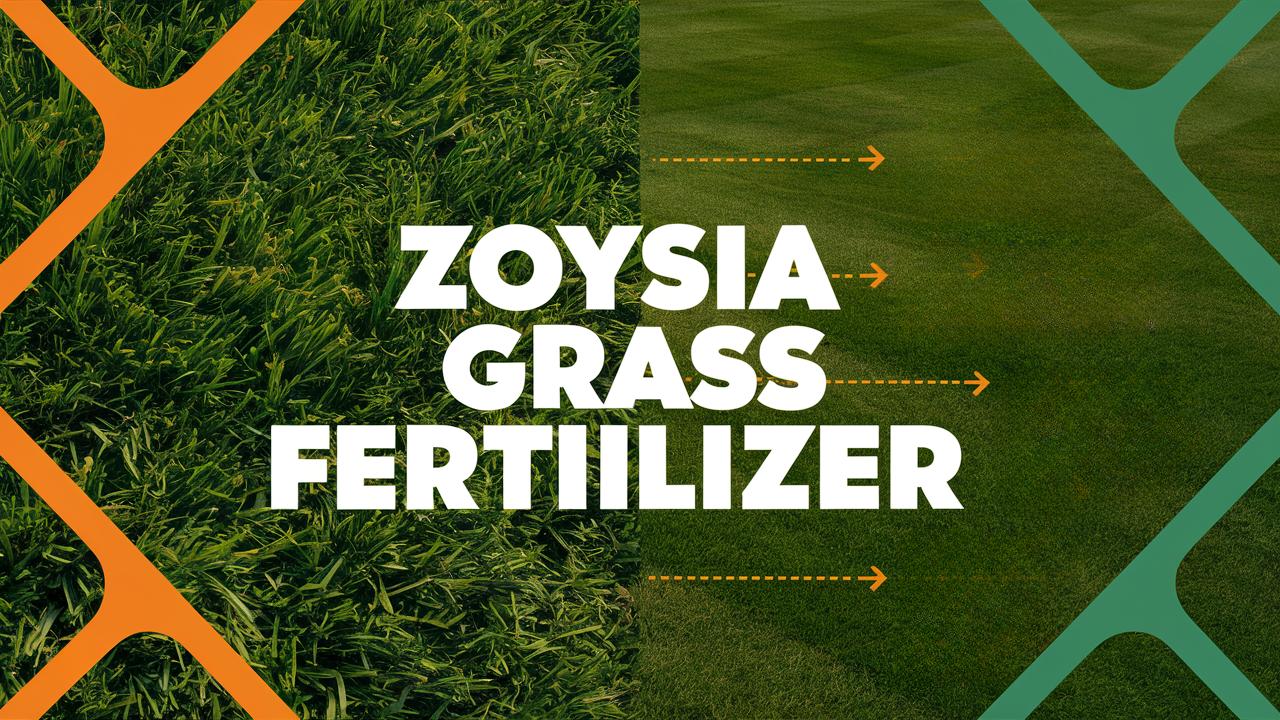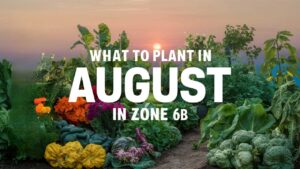In this comprehensive guide, we’ll explore the various factors you should consider when choosing the right Zoysia grass fertilizer
Zoysia Grass Fertilizer
| Image | Name | Rating | Shop |
|---|---|---|---|
 | Andersons Professional PGF Complete 16-4-8 Fertilizer |  | |
 | Scotts Turf Builder Lawn Food |  | |
 | Complete Lawn Fertilizer |  |
Andersons Professional PGF Complete 16-4-8 Fertilizer
The Andersons Professional PGF Complete 16-4-8 Fertilizer with Humic is an ideal choice for those looking to fertilize their zoysia grass. Its slow release formula provides up to 8 weeks of feeding, making it a convenient option for busy homeowners. One of the standout features of this fertilizer is its use of humic DG, which helps enrich the soil and improve nutrient uptake in plants. This makes it particularly well-suited for zoysia grass, as it can help promote healthy growth and development. Additionally, with over twice as many particles per square foot, you can be confident that your lawn is receiving the nutrients it needs to thrive.
Scotts Turf Builder Lawn Food
Looking for an all-purpose lawn fertilizer suitable for zoysia grass? Consider Scotts Turf Builder Lawn Food. This product is designed to feed and strengthen your grass, helping it develop deep roots that are better equipped to absorb water and nutrients.
This Scotts Turf Builder Lawn Food comes in a 12.5 lb bag and covers approximately 5,000 sq ft of lawn space. One notable feature is its adaptability – the fertilizer works effectively on any type of grass, including zoysia, regardless of lawn wetness or dryness at application time. So you can apply it as needed to support your lawn’s overall health.
Complete Lawn Fertilizer
This fertilizer is a good choice for those looking to provide their Zoysia grass with a balanced nutrition supplement. The Advanced 16-4-8 liquid formula offers key macronutrients that are essential for the growth and health of your lawn, including nitrogen, phosphorus, and potassium.
The presence of seaweed and fish in this product ensures that you’re not only providing basic nutrients to your grass but also additional organic matter that can benefit the soil. This fertilizer is easy to use, as it comes in a ready-to-use sprayer, making application straightforward. It’s suitable for all types of grass, including Zoysia, and is manufactured in the United States by a knowledgeable company.
Lawn Kickstart
Sunday Lawn Kickstart Fertilizer is a good option for those looking for a fertilizer that’s easy to apply and promotes overall health of their lawn. This liquid formulation, with its 22-0-2 ratio, provides the necessary nutrients like nitrogen, iron, and potassium to support deep rooting and recovery from heat stress.
This fertilizer is suitable for lawns in temperate climates where temperatures range between 60-89° F. It’s recommended to apply Lawn Kickstart every 4-6 weeks during the growing season, starting with a first application and following up with Sunday’s Green Machine. The easy-to-use design allows you to fertilize your lawn quickly, attaching to your hose and spraying like watering.
Scotts Turf Builder Halts Crabgrass Preventer with Lawn Food
If you’re looking for a way to keep your zoysia grass lawn healthy and weed-free, consider using Scotts Turf Builder Halts Crabgrass Preventer with Lawn Food. This product is specifically designed to prevent crabgrass and other unwanted weeds from growing in your lawn while also providing essential nutrients to promote a fast green-up after winter.
This pre-emergent weed killer plus fertilizer can be applied to a dry lawn in early spring, making it the perfect time of year for a zoysia grass lawn. One package covers 5,000 square feet, so you won’t need to worry about overbuying or running out. Plus, regardless of rain, snow, or freezing temperatures after application, Scotts Turf Builder Halts Crabgrass Preventer with Lawn Food continues to work effectively.
NitroIron
The Almighty Lawn Fertilizer +3.4% Iron is a great choice for those looking to keep their Zoysia grass in top condition during the summer months. This fertilizer is specifically formulated with iron to promote deep green color and healthy growth on Bermuda, Zoysia, St. Augustine lawns.
With its stabilized nitrogen technology, this fertilizer provides continuous growth and can be applied every 4-6 weeks for optimal results. It’s perfect for use as a summer fertilizer on warm season lawns or as a winterizer on cool season lawns during the fall months. Plus, with three available bag sizes (18lb, 25lb, 50lb), you can choose the one that covers the right amount of square footage for your lawn.
How To Choose a Zoysia Grass Fertilizer
Zoysia grass is a popular turf choice for many homeowners and landscape enthusiasts due to its lush appearance and tolerance to heat and drought. However, to maintain its vibrant green color and dense growth, selecting the right fertilizer is crucial. In this comprehensive guide, we’ll explore the various factors you should consider when choosing the right Zoysia grass fertilizer, discuss nutrient requirements, examine the types of fertilizers available, and delve into application techniques. By the end, you will have a clear understanding to make an informed decision based on your specific lawn needs.
Understanding Zoysia Grass
Characteristics of Zoysia Grass
Zoysia grass is a warm-season grass that thrives in temperate regions. It grows best in moderate to high temperatures and exhibits a remarkable ability to withstand drought and foot traffic. Its growth pattern is slow in the spring but becomes robust and thick during the summer months. Zoysia also has a dense growth habit, which offers excellent weed suppression capabilities.
Nutrient Needs of Zoysia Grass
Like all plants, Zoysia grass requires a balanced supply of essential nutrients to promote optimal growth. The primary nutrients needed are nitrogen (N), phosphorus (P), and potassium (K), known as macronutrients, which are vital for the grass’s overall health. Secondary nutrients, such as calcium, magnesium, and sulfur, and trace elements like iron, manganese, and zinc, are also important but required in smaller quantities.
Nitrogen (N) promotes lush, green growth and is critical during the actively growing season.
Phosphorus (P) contributes to strong root development and flowering.
Potassium (K) helps in drought resistance, disease resistance, and overall vigor.
In summary, understanding the nutrient requirements of Zoysia grass forms the foundation for selecting the best fertilizer.
Factors to Consider When Choosing Zoysia Grass Fertilizer
Soil Testing
Before jumping into fertilizer selection, it’s essential to assess your soil’s current conditions through soil testing. A soil test will provide you with information about pH levels and nutrient content, helping you identify any deficiencies or excesses already present in the soil. Zoysia grass usually prefers a slightly acidic to neutral pH (6.0 – 7.0). The soil test results will guide you in making decisions about which fertilizer components are necessary.
Season and Timing
The timing of fertilization is just as crucial as the fertilizer type. Zoysia grass grows actively from late spring through summer. Fertilizing early in the growing season—around late April to early May—ensures that the grass has adequate nutrients throughout its peak growth period. Depending on your region’s climate, you might also consider applying a light fertilization in late summer as a boost before cooler temperatures arrive.
Type of Fertilizer
Fertilizers can broadly be categorized into two types: synthetic and organic. Understanding their differences will help you choose the best one for your Zoysia grass.
Synthetic Fertilizers: These fertilizers provide a quick nutrient release and are useful for achieving fast results. They usually contain a high percentage of macronutrients, but they can run the risk of soil nutrient runoff if over-applied. Common synthetic fertilizers for Zoysia grass include those with an N-P-K ratio of 15-0-15 or similar.
Organic Fertilizers: Derived from natural sources like compost, manure, and bone meal, organic fertilizers release nutrients more slowly. They also improve soil structure and microbial activity, leading to healthier long-term growth. If you are an environmentally-conscious gardener, organic options are appealing. They may be less concentrated than synthetic varieties, leading to more frequent applications but can enhance soil health significantly.
Fertilizer Composition
When looking at any fertilizer, you will notice an N-P-K ratio on the packaging. Understanding how these numbers relate to Zoysia grass will greatly inform your choice:
A higher first number (N) is preferable during the growing season for lush growth.
The second number (P) can be lower unless you are establishing new turf or poorly rooted areas, where a higher phosphorus content can support deep rooting.
The third number (K) is essential for disease resistance, so a balanced or slightly higher potassium level can benefit overall turf health.
For established Zoysia grass, a balanced fertilizer like 10-10-10 or a slow-release NPK formulation with a ratio of around 15-0-15 is generally suitable.
Fertilizer Granule Size
The size of the fertilizer granules can affect not only how quickly the nutrients are available but also the ease of application. Smaller granules tend to dissolve quicker, providing immediate nutrient access to the grass, but may require more frequent applications. Larger granules, on the other hand, release nutrients gradually over time, reducing the number of applications needed. Choose the granule size that aligns with your maintenance preferences and gardening philosophy.
Application Techniques for Zoysia Grass Fertilizer
Method of Application
How you apply the fertilizer can significantly affect its efficacy and your lawn’s overall health. The primary methods of application include:
Broadcast Spreading: This involves using a spreader to evenly distribute the fertilizer over the lawn. It ensures coverage and reduces the chances of over-fertilizing specific areas.
Liquid Fertilizers: These fertilizers can be applied as a foliar feed. They are quickly absorbed through the leaves and can be advantageous for a rapid nutrient boost, particularly during periods of stress or recovery.
Top Dressing with Organic Matter: If you choose organic fertilizers, spreading a thin layer of compost or well-rotted manure can act as a slower, more natural nutrient source while improving soil quality.
Follow the Recommended Rates
Over-fertilization can lead to a host of problems, including fertilizer burn, increased susceptibility to pests and diseases, and negative environmental impacts like runoff into waterways. Always adhere to the recommended application rates indicated on the fertilizer package and consider dividing your total application into two or three smaller doses rather than one large application.
Special Considerations for Zoysia Grass Fertilization
Fall and Winter Care
While Zoysia grass thrives in warm months, attention should also be paid to fall and winter care. During the months of dormancy, avoid fertilizing, as the grass does not actively absorb nutrients. Instead, focus on proper mowing height and thatch management.
Pest and Disease Management
Alongside fertility, maintaining a pest and disease prevention plan is integral to Zoysia grass health. While fertilizers support growth, ensure your Zoysia is not under stress from pests or diseases. Regularly scouting for issues and addressing them promptly will keep your lawn lush and thriving.
Watering
Fertilization and watering go hand in hand. A newly fertilized lawn needs adequate water for the nutrients to be absorbed. After applying fertilizer, ensure that the lawn receives appropriate watering to facilitate nutrient uptake while avoiding runoff.
Environmental Considerations
As a responsible lawn owner, consider the environmental impact of your fertilizer choice. Opt for products that minimize phosphorus content unless your soil test indicates otherwise, to prevent pollution and preserve aquatic ecosystems.
Troubleshooting Common Issues
Yellowing Grass
If your Zoysia grass shows signs of yellowing, it may indicate nitrogen deficiency, particularly if it happens at the start of the growing season. Applying a nitrogen-rich fertilizer can help revive its color.
Patchy or Thin Areas
Thin patches may suggest several issues, including nutrient deficiencies, dog urine damage, or compacted soil. For thin areas, consider overseeding with Zoysia seed in conjunction with fertilizing.
Weed Competition
Despite Zoysia’s robustness, weed pressures can sometimes emerge. A well-fed lawn generally has a better fighting chance against weeds. Ensure a holistic approach that includes proper mowing, watering, and fertilization.
Choosing Additional Nutrients
Micronutrients
Beyond the primary macronutrients N-P-K, you may also want to consider micronutrients that support overall turf health. Iron can enhance greenness without excessive growth, while manganese can aid in rapid establishment. Micronutrient supplements may be necessary if your soil test indicates deficiencies.
Biological Enhancements
Investigating bio-stimulants or microbial inoculants can also be beneficial. These products encourage beneficial soil microbes that improve nutrient availability while bolstering grass health.
Seasonal Lawn Care Regimen
A well-structured seasonal care regimen that combines proper fertilization, watering, and mowing techniques can ensure the sustained health of your Zoysia lawn. As spring arrives, focus on getting your Zoysia grass ready for the growing season with a pre-emergent to control weeds and applying fertilizer. During the active growth phase, keep an eye on soil moisture and adjust watering schedules accordingly. In the fall, slow the growth of your Zoysia grass by reducing watering and stop any fertilization as dormancy approaches.
Conclusion
Choosing the right fertilizer for your Zoysia grass is a multifaceted process that takes into account soil health, nutrient requirements, and your specific agricultural practices. By understanding the needs of your grass, evaluating your soil condition, and selecting the right fertilizer type and application method, you can ensure a vibrant, lush lawn that stands as a testament to your gardening efforts.








